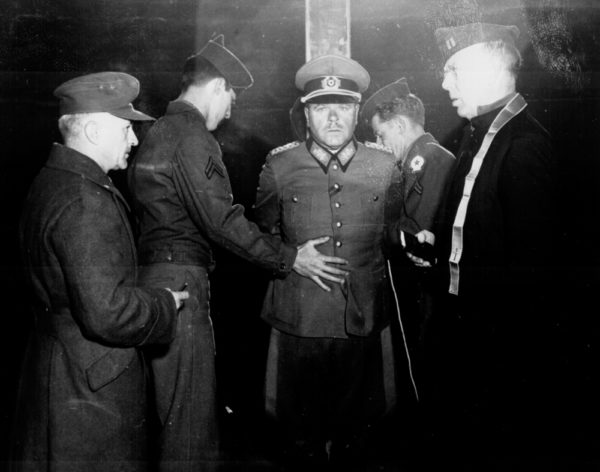
The German Occupation of Paris and France turned brutal within eighteen months of their soldiers marching down the avenue des Champs-Élysées on the morning of 14 June 1940. Despite the original orders to respect and act as “gentlemen” to the citizens of Paris, the Germans gradually increased the pressure of their jackboot on the throat of France. After the successful Allied invasion of North Africa (Operation Torch) in November 1942, all pretense of an “independent” French government—Vichy—was gone as was the designation of the Occupied- and Unoccupied-Zones.
La Grande Rafle (The Great Roundup) had taken place over two days in July 1942. More than 13,000 Jewish citizens (approximately 4,000 were children) were arrested, detained, and transported to Auschwitz—only several hundred would return less than three years later. Food was scarce except for the privileged few who could afford the black market or those who kept company with German officers. Detention, interrogation, torture, and execution of hostages, résistants, foreign agents, or anyone else the Nazis deemed unworthy became common place as the Gestapo strengthened its position within the Nazi hierarchy and its grip on Paris.
As the Allies moved closer to Paris in the late summer of 1944 after breaking out of Normandy, the Germans began to make arrangements to leave the city. They knew the consequences if they remained. Even some of the German officers tried to convince their lovers to accompany them back to Germany as they predicted harm would likely come to the women if they remained behind. Little did they know the scope of violence that would descend on suspected collaborators.
The Purge
The word épuration (from the French word épurer—to purify or to purge) describes the criminal prosecution of French and Italian officials held after World War II (Merriam-Webster Dictionary). In reality, the actual épuration was much harsher.
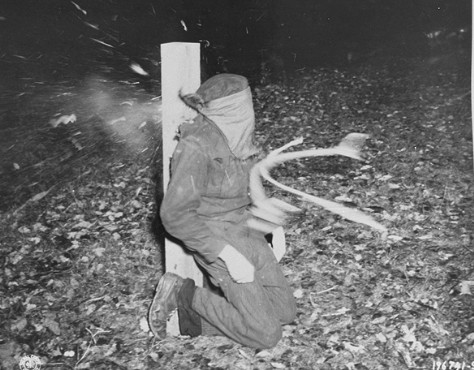
The three Épuration periods were: épuration sauvage, épuration légale, and a third phase in which suspected and guilty collaborators were treated with lenience. The first phase, épuration sauvage, produced the most brutal retribution of the three periods. The first phase took place during and immediately after the liberation of Paris on 25 August 1944. The wrath of the partisan French citizens was directed at suspected and well-known collaborators. Many people waited inside their apartments expecting to hear the dreaded knock—similar to the Gestapo and French police tactics during the Occupation. After the arrest, punishments included beatings, interrogation with torture, as well as summary executions (with or without the benefit of a “kangaroo” court). This period of time was essentially one of lawlessness and mob rule. Women suspected of having a German lover were rounded up and most had their heads shaved while some had swastikas carved into their foreheads. A second but shorter phase occurred in May and June of 1945 when the surviving deportees returned home. Newsreels of the concentration camps and the gruesome scenes contributed to another round of épuration sauvage. It was reminiscent of the week-long “September Massacre” (1792) during the French Revolution when the mobs emptied the prisons and killed many of the prisoners.
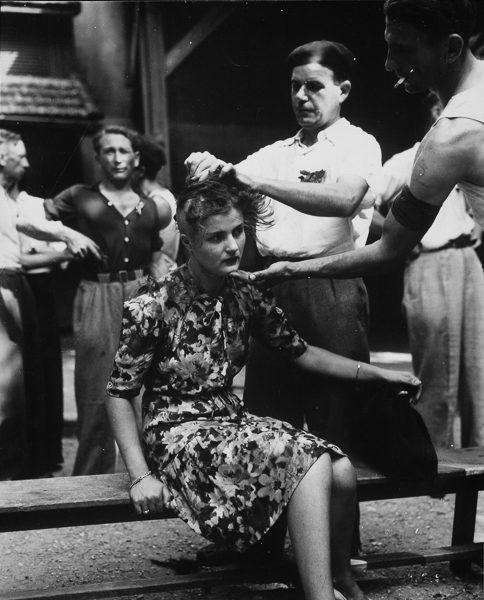
Charles de Gaulle began to establish order in September 1944. He appointed people to oversee the detention centers, internment camps, and prisons where the suspected collabos were held. He also established judicial tribunals to bring the collaborationists as well as officials of the Vichy government to justice. This would be known as the épuration légale period. The head of the collaborationist Vichy government, Marshal Philippe Pétain, would be tried and sentenced to death in the summer of 1945 while the trial of his second in command, Pierre Laval, took place in October 1945. De Gaulle commuted Pétain’s sentence to life, however, Laval was executed on 15 October 1945 (a future blog on Laval is scheduled: Time Magazine “Man of the Year” is Executed).
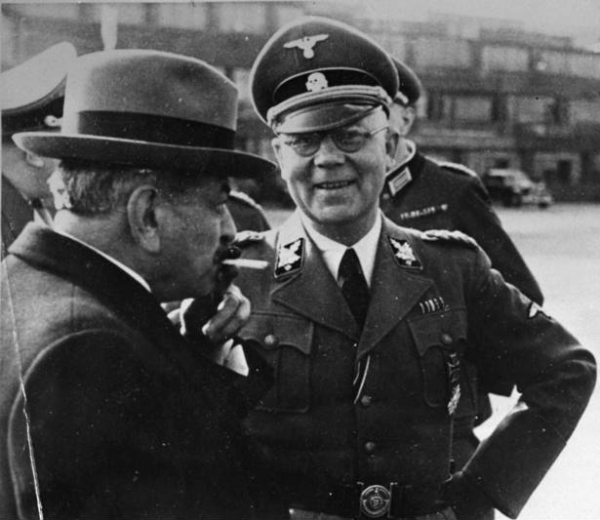
“My Heart Is French But My Ass Is International”
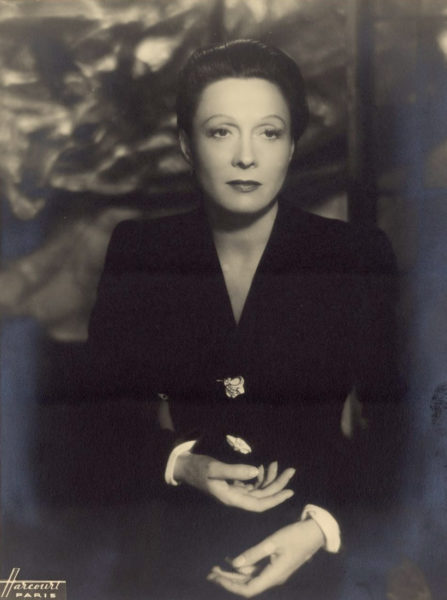
There were three types of trials for suspected non-government collaborationists. The first was for those individuals who were suspected of violating Article 75 of the French penal code which outlawed treason and sharing information with the enemy. These trials were held in criminal courts of justice. The second category was reserved for those who did not break any specific law but whose actions were deemed to be “unpatriotic” or considered to be dégradation nationale (national indignity). These cases were judged in the Civic Courts. The third type of trial was public opinion. The best example of this would be the public’s reaction to certain entertainers who they thought collaborated with the Germans. The famous French actress, Arletty, lived with a German Luftwaffe officer during the Occupation. After being arrested by partisans, Arletty was quick to point out “My heart is French but my ass is international.” She was tried for treason and sentenced to eighteen months in prison—served in a very luxurious château. Her reputation and career suffered for her actions during the Occupation as did many other well-known entertainers. Some of the better-known celebrities (click here to read Coco Chanel: Nazi Collaborator or Spy?) would not return to France until the 1950s.
Collaboration
One of the first issues France had to deal with after the Liberation was the definition of collaboration. What was collaboration, what types of actions were to be considered collaborationist, and who were the collabos? One thing I must keep reminding myself as I research these next two books on the Occupation is that I am viewing this after seventy plus years and so it’s easy to pass judgement after that amount of time has lapsed (I guess we call it “Monday Morning Quarterbacking”). The second question to be asked “Is it fair for someone to pronounce judgements when they did not live through it?” I believe that in some cases it is proper for a historical judgement to be made but in others, it is not. More on that in a minute.
To start with, the French-German Armistice signed 22 June 1940 included Article 3 which stated that all French authorities and services in the occupied territory were “to conform to the regulation of the German military authorities and to collaborate with the latter in a correct manner.” Marshal Pétain addressed the citizens of France on 11 October 1940 with the statement that “France is ready to seek this collaboration in all fields…” Upon returning from his meeting with Hitler, Pétain said “A collaboration was envisioned between our two countries. I accepted the principle.” So, at the very highest level of the Vichy government, collaboration was cast into concrete. As Pétain said, “The details will be discussed later.”
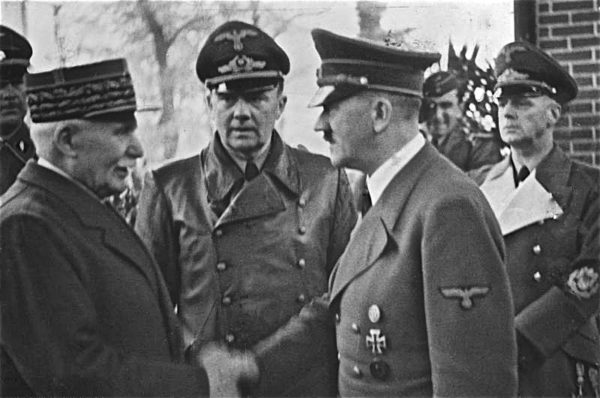
The question of collaboration would not only implicate Vichy politicians, administrators, and law enforcement but the working-class French and everyone in between. Ronald Rosbottom (author of When Paris Went Dark) asked “where did ‘accommodation’ end and ‘collaboration’ begin?” Handing over information to the Germans, denouncing fellow citizens for blood money, actively participating in the Jewish round-ups and subsequent deportations, becoming a commissioned German soldier (e.g., Waffen-SS Charlemagne Division), actively engaged in the black market, and promoting the activities and philosophy of the Nazis (e.g., the Milice)—among other deplorable acts—would certainly not be hard to argue were pure collaboration. On the other hand, if you were a waiter at the Hotel Ritz Paris, would serving a table of German officers be considered a collaborationist act? Were you a collabo if the only way you could feed your children was to live with a German soldier who had access to food? Was the madam of the One-Two-Two Club a collabo when she was ordered to open her brothel to only German officers or for that matter, any of the other madams of the more than thirty brothels used exclusively for the pleasures of the German soldier?
Litmus Tests
On 15 March 1944, the Conseil National de la Résistance (National Council of Resistance or CNR) laid out basic offenses it would use to judge suspected collabos:
- Taking part in a collaborationist organization
- Taking part in propaganda
- Denunciation
- Any form of zeal in favor of the Germans
- Black market activities
I read a book where the author, a recognized historian of the French Occupation, had difficulty trying to decide what constituted the act of collaboration during this period of time. He finally came to the conclusion that he had to first ask himself the question “Was the suspected collaborationist working with the Germans or with the Nazis?” If the answer was the latter, I suppose there really is no middle ground—it’s collabo as charged. But if the former was true (such as waiting on that table of German soldiers), then it may be harder to argue for a charge of collaboration.

One of the saddest parts of all this comes with the politicians’ subsequent pardons, amnesties, and commutations of sentence for many perpetrators of criminal acts. In fact, some of the worse criminals were protected by future French presidents. Many of them weren’t brought to justice until the 1980s as a result of Serge and Beate Klarsfeld’s efforts.
The national deception of the French role during the Occupation wasn’t unmasked publicly until 1986 when President Jacques Chirac laid out France’s responsibility in The Great Roundup of Jewish men, women, and children during those two nights in July 1942. Independent documentary films chronicling France’s relationship with the Germans such as The Sorrow and the Pity (Marcel Ophüls, director, producer, & writer; 1969) were not allowed to be released until the early 1980s.
Yet even today, three generations later, you won’t find any reference to those four years in the histories of certain commercial enterprises.
What’s New With Sandy and Stew?
We’re diligently working with image repository companies around the world to find interesting and relevant photographs taken during the German occupation of Paris. Our primary sources seem to be The Image Works (the American distribution firm for Roger-Viollet), Alamy, Mary Evans, National Archives, Bridgeman Art Library, and the Bundesarchiv-Bildarchiv (the German Federal Archives). There are two primary issues with locating acceptable images: resolution and subject matter.
The images from the 1940s are low resolution. While this is fine for blogs that require only smaller pictures, it can pose a challenge when it’s time to put them in a book requiring crisp and high-quality resolution. Second, the subject matter was controlled by the Germans during the Occupation. The only photographs allowed were ones taken by the soldiers or an authorized photographer. If a civilian was caught with a camera taking photos, they would likely be shot on the spot because they were automatically assumed to be a spy.
Someone Is Commenting On Our Blogs
Thank you to Gerald C. for taking our book Where Did They Burn the Last Grand Master of the Knights Templar? on his and Marcia’s recent trip to Paris. Gerry pointed out (correctly) that the book did not take him to the lost treasures of the Knights Templar. Even if it did, good luck getting the permit to dig that stuff up! They hate anyone digging up the city (except for new Métro lines).
If there is a topic you’d like to see a blog written about, please don’t hesitate to contact me. I love hearing from you so keep those comments coming.
Why Would You Want To Buy Our “Walks Through History” Books?
Simple.
You like to travel and experience history and historical events. You like to see original buildings that had a significant impact on the people and events of the history you’re engaged with. You want to know the stories behind the brick and mortar in front of you.
The walking tour books are meticulously researched so you can go directly to those sites and learn about the building’s history as well as an introduction to some of the more interesting people associated with it.
We Need Your Help
Please tell your friends about our blog site and encourage them to visit and subscribe. Sandy and I are trying to increase our audience and we need your help through your friends and social media followers.
Thank You
Sandy and I appreciate you visiting with us. We have some exciting things on the horizon and we’ll keep you updated as we go along.
Share This:
Follow Stew:
Find Stew’s books on Amazon and iBooks.
Please note that we do not and will not take compensation from individuals or companies mentioned or promoted in the blogs.
Walks Through History
Copyright © 2017 Stew Ross

